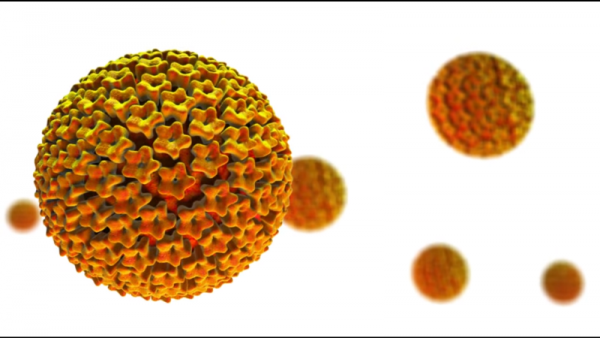By KM Diaz, | April 19, 2017

HPV is a viral infection that spreads between partners through vaginal, oral, and anal sex, or via close skin-to-skin touching. (YouTube)
The National Center for Health Statistics has announced that 39.9 percent of women between the age of 18 to 59, and 45.2 percent of men in the same age bracket were infected with genital HPV between 2013 and 2014. During the same period, 20.4 percent of women and 25.1 percent of men were also at risk of developing genital HPV.
Like Us on Facebook
HPV is a viral infection that spreads between partners through vaginal, oral, and anal sex, or via close skin-to-skin touching. According to the latest findings of Centers for Disease Control and Prevention, those who are sexually active could be at risk of HPV.
Summer Dewdney, MD, a gynecologic oncologist at Rush University Medical Center, says that HPV is a common disease that affects approximately 80 percent of sexually active people. The immune system of the body may clear HPV within two years. However, the infection does not clear up most of the time. Since there is no cure for HPV, the virus increases the risk of cancer and genital warts.
Each year, about 27,000 men and women are affected by the following cancers associated with HPV; cervical cancer, anal cancer, vaginal cancer, penile cancer, vulvar cancer, throat cancer, and oropharyngeal cancer. More than 11,000 cases of cervical cancers in the U.S. are caused by HPV, and 72 percent of oral cancers among young men are also caused by the same virus.
Vaccination
Doctors have adviced people should take precautions to combat HPV infection before it becomes a major health problem. There are two available vaccines for HPV: Cervarix and Gardasil.
These two are available to fight certain types of HPV particularly the ones that cause cervical cancer for women and anal cancer in men. The vaccine should be injected three times within a six-month period.
Gardasil is recommended for women and girls with the age of 9 and 26. Cervarix, on the other hand, is suggested for girls aged 9 and women of any ages without prior HPV vaccines, and who have not been diagnosed with cervical cancer. Boys can also receive HPV vaccine starting at the age of 11.
Annual PAP tests for women are recommended beginning at the age of 21, even if they have been vaccinated or not. Pap tests enable the doctors to detect the abnormalities, particularly the changes of the cells in the cervix.
Around 60 to 80 percent of women in the U.S. diagnosed with invasive cervical cancer had not undergone a Pap test for about five years, according to the American Cancer Society.
Safe Sex
Previous studies also showed that women with several sexual partners are at risk of developing HPV and cervical cancer. Dewdney says that practicing safe sex, like using a condom, decreases the risk of contracting sexually transmitted diseases. However, the area of the penis that's not covered by a condom may still be infected with HPV. Using a condom properly and consistently alongside vaccination can lessen the risk of HPV among men.
-
Use of Coronavirus Pandemic Drones Raises Privacy Concerns: Drones Spread Fear, Local Officials Say

-
Coronavirus Hampers The Delivery Of Lockheed Martin F-35 Stealth Fighters For 2020

-
Instagram Speeds Up Plans to Add Account Memorialization Feature Due to COVID-19 Deaths

-
NASA: Perseverance Plans to Bring 'Mars Rock' to Earth in 2031

-
600 Dead And 3,000 In The Hospital as Iranians Believed Drinking High-Concentrations of Alcohol Can Cure The Coronavirus

-
600 Dead And 3,000 In The Hospital as Iranians Believed Drinking High-Concentrations of Alcohol Can Cure The Coronavirus

-
COVID-19: Doctors, Nurses Use Virtual Reality to Learn New Skills in Treating Coronavirus Patients









